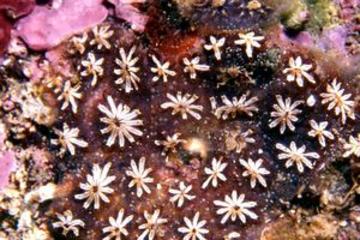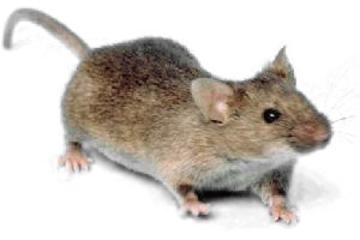
Star tunicates form colonies with their relatives, and they identify their relatives using genetically encoded proteins that lie on the surface of cells
Image: Massimiliano de Martino
A range of organisms, from animals to plants to slime moulds, show nepotism – they preferentially help their closer relatives. Part of helping closer relatives is being able to tell them apart from distant or non-relatives – known as kin recognition. This could happen via environmental cues (help who you grew up with) or genetic cues (help individuals that you share genes with).
However, kin recognition that relies on genetic cues has long been assumed not to be evolutionarily stable. More common alleles would be more likely to be helped, and hence rare alleles would go extinct, eliminating the genetic diversity that is needed for kin recognition. This problem is known as ‘Crozier’s paradox’.
Research published today in Nature Communications, led by Tom Scott, has solved this paradox. They show that adding in more behaviour to a theoretical model, especially allowing individuals to have multiple social encounters, solves this problem and allows genetic kin recognition to evolve.
In addition, they show that rare alleles provide better information about relatedness, and so are favoured. Genetic kin recognition can actually maintain the diversity that it needs.
“In contrast to the previous consensus amongst biologists, our research shows that kin recognition based on genetic cues can in fact evolve relatively easily!”
Tom Scott
If individuals can encounter several individuals before committing to a social interaction with one of them, individuals with rare alleles can socially be helped just as often as individuals with common alleles. This kind of model assumption better reflects how animals actually behave in the real world.
This eliminates the advantage of common alleles over rare alleles. In other words, being able to encounter several individuals before each social interaction eliminates 'Crozier's paradox'.
They also found that rare alleles provide better information about relatedness. If an individual using a rare allele finds another individual with the same rare allele, it is highly likely that the other individual is a genuine relative.
An analogy is the use of surnames in humans: if a person with a common surname like "Smith" comes across another "Smith", the two individuals are

House mice help raise the offspring of their relatives, and they identify their relatives using a genetically encoded odour.
Image credit: public domain
unlikely to be genuinely related - they just happen to have the same surname. But if a person with a rare surname like "Fernsby" comes across another "Fernsby", there's a high chance that they are actually related!
It is this advantage for rare tags – providing better information about relatedness – that allows genetic kin recognition to maintain the diversity that it needs.
These results help us explain kin recognition across all levels of biology, from bacteria to humans. As a result, empirical work – such as laboratory and field studies - needs to be taken in completely new directions. Because the underlying theory of Crozier’s paradox was misleading, empirical researchers may have been asking the wrong empirical questions.
“So, if genetic cues are in principle not so hard to evolve, what adaptive benefits are there for different organisms evolving to use different types of cues? This will be the topic of future work, which will aim to work out the evolutionary drivers of different types of kin recognition.”
Tom Scott
To read more about this research, published in Nature Communications, visit: https://doi.org/10.1038/s41467-022-31545-4